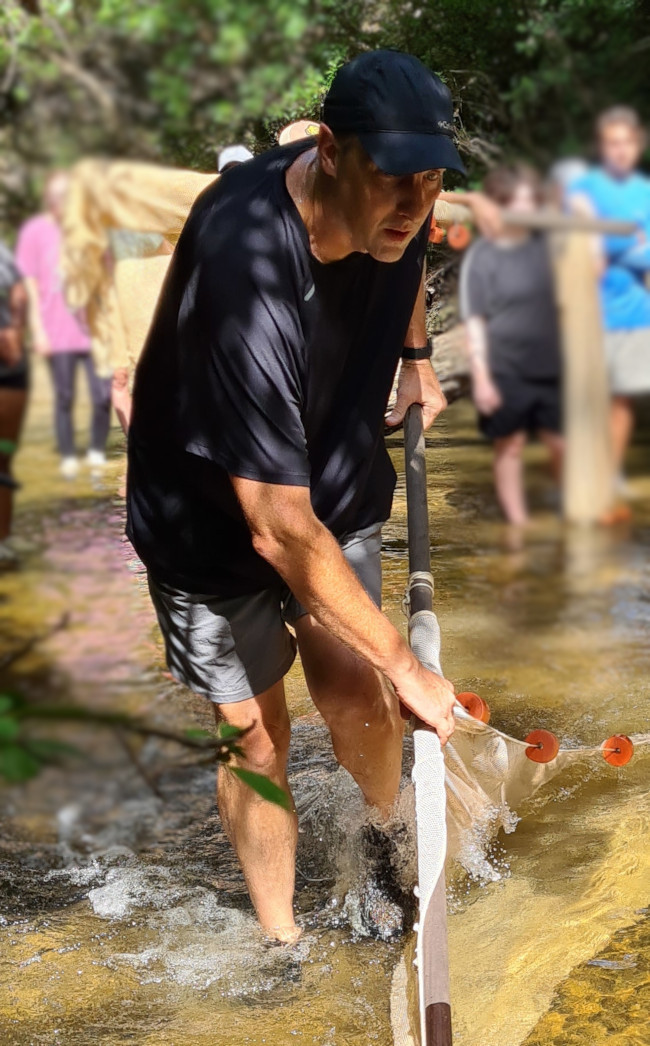Jake Schaefer
Ph.D. University of Oklahoma (1999) - Movement by three stream dwelling cyprinids (Notropis boops, Campostoma anomalum, and Cyprinella venusta)
Professor and Curator of Fishes
Research in my lab focuses on the evolution, ecology, physiology and conservation of freshwater fishes. USM is located within the Gulf Coastal Plains biodiversity hotspot and the Pascagoula River system, which is the largest remaining undammed river system in the contiguous states (Dynesius and Nilsson 1994). This presents a tremendous opportunity to do research across a spectrum of topics in diverse and dynamic systems. Over the years we have partnered with state and federal agencies to conduct research on a number of species of conservation concern including Alabama Shad (Alosa alabamae), Pearl Darter (Percain aurora), Bayou Darter (Nothonotus rubrus), Freckled Darter (Percina lenticula) and Yazoo Darter (Etheostoma raneyi).
Work in the lab has also used the species in the Fundulus notatus species complex (F. notatus, F. olivaceus and F. euryzonus) to address basic questions in evolution and ecology. The species in this complex are closely related and known to coexist and hybridize in numerous replicate contact zones throughout their broadly overlapping ranges. Within areas of coexistence, the species usually segregate along stream gradients with areas of hybridization and coexistence typically narrow and centered on confluences that feature abrupt changes in underlying habitat. Sometimes coexistence is spatially limited, other times it is extensive. Previous research has also demonstrated that sometimes the typical up and downstream distributions of the species are reversed. There is also extensive variability in how much the species hybridize with some contact zones featuring few or no hybrids and others being characterized by random mating among species. Overall, Fundulus contact zones are replicated across basins with a number of fundamental differences among replicates that make this an excellent system to address basic questions of ecology and evolutionary biology. While hybrid zones have long been of interest as “natural laboratories of evolution”, their ultimate role in the evolutionary process is not clear. Hybridization is increasingly recognized as common, and can be either detrimental through erosion of existing genetic structure, or beneficial through the formation of novel allele combinations (adaptive hybridization or hybrid speciation). The factors that differentiate these disparate outcomes is still debated and one of the more pressing questions in evolutionary biology.


